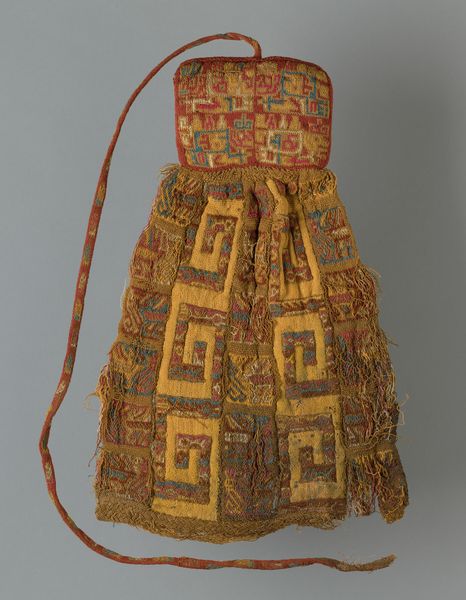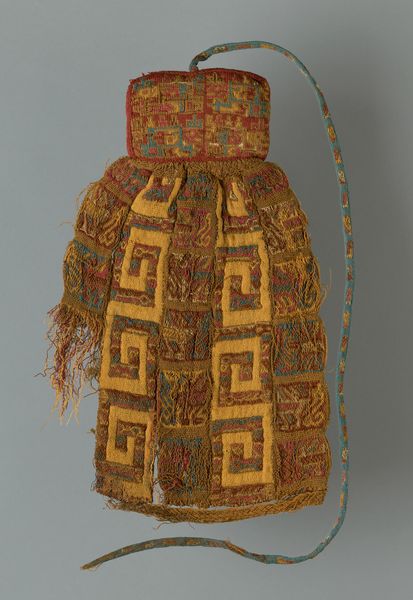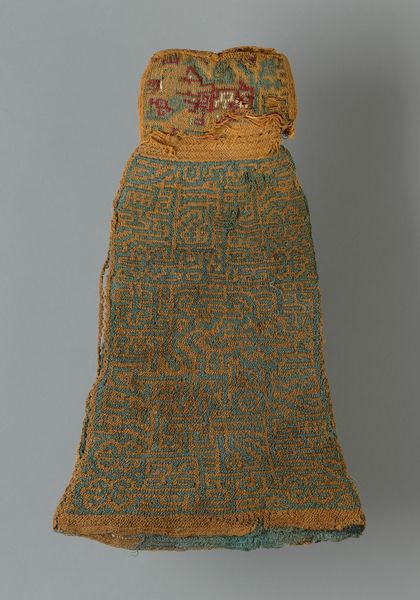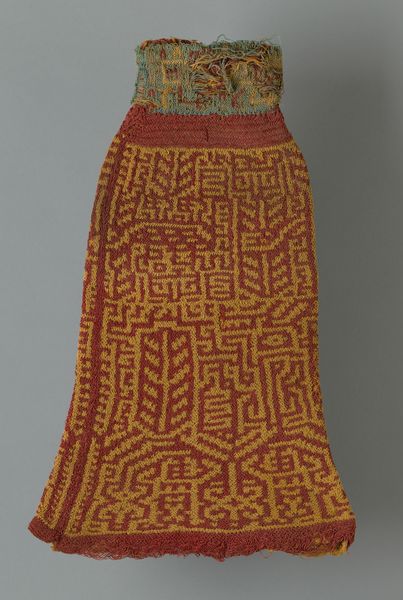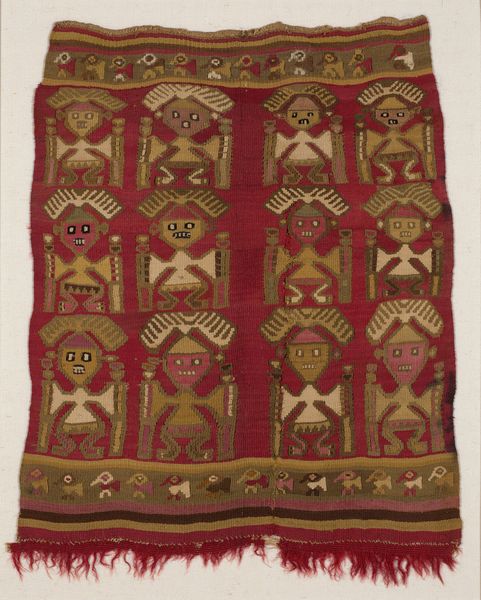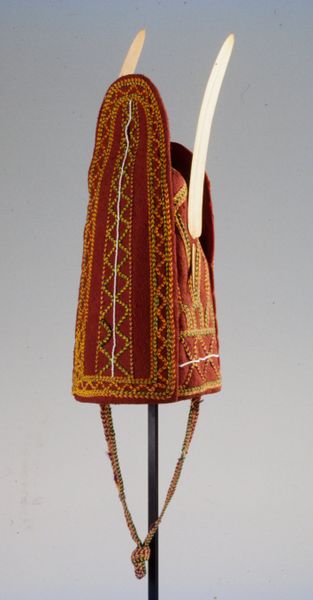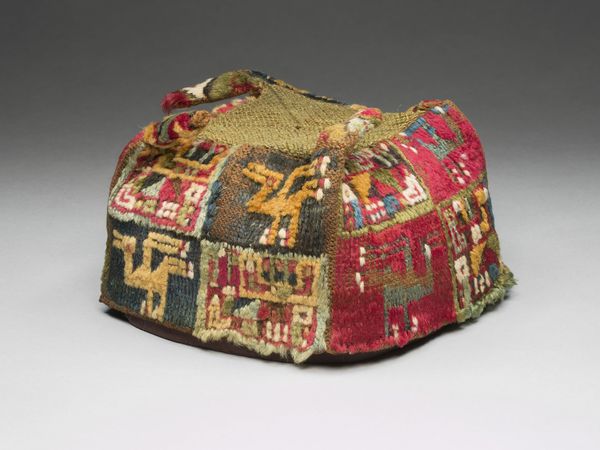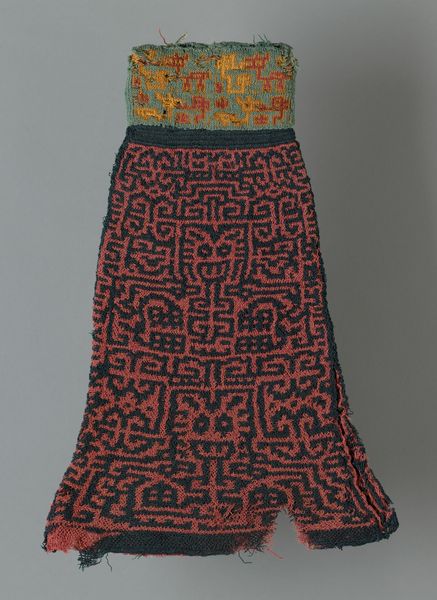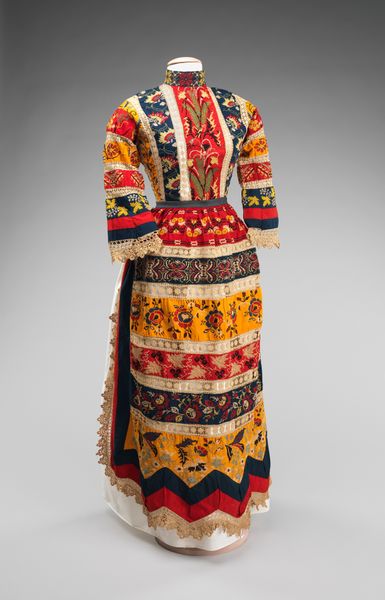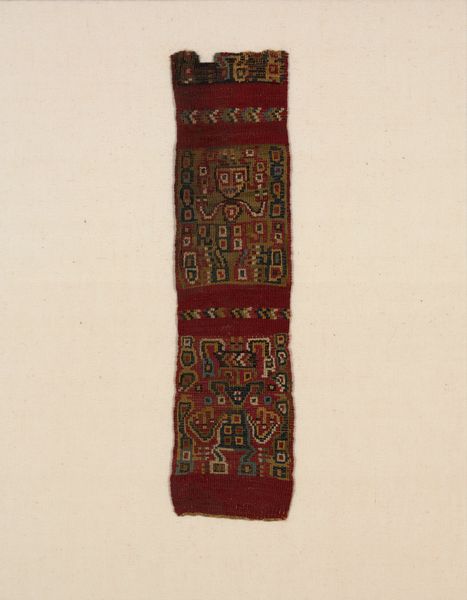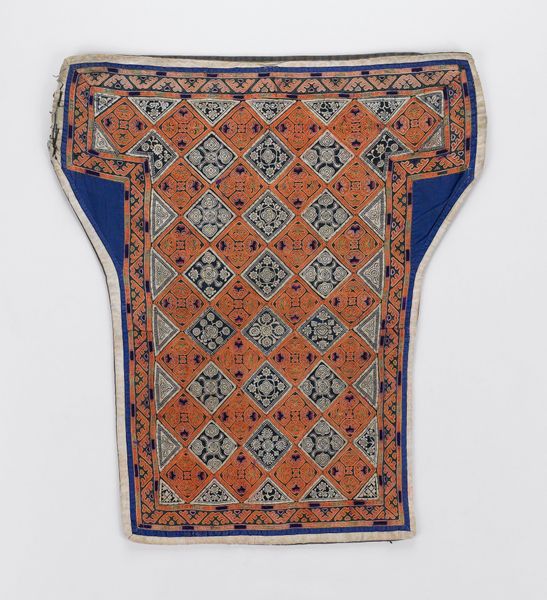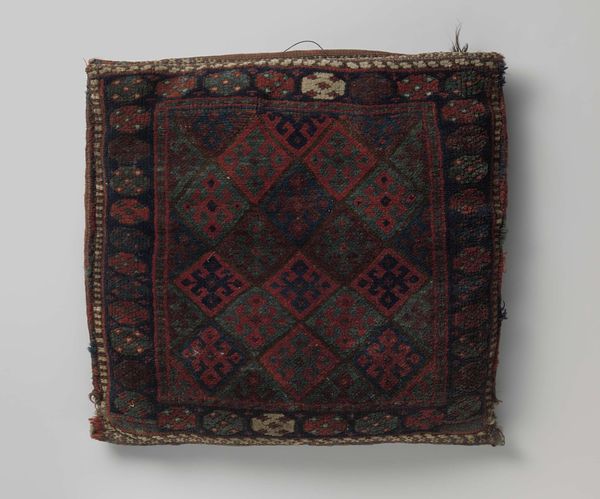
weaving, textile
#
weaving
#
textile
#
geometric
#
indigenous-americas
Dimensions: 33.3 × 20 cm (13 1/8 × 7 7/8 in.)
Copyright: Public Domain
Editor: We're looking at "Tassel," a textile weaving from the Nazca culture, dated between 500 and 900 AD. It's currently held at The Art Institute of Chicago. What strikes me immediately are the bold, geometric patterns, and I'm curious about the interplay between the various colors within each section. How would you interpret this work from a formalist point of view? Curator: The visual architecture of this piece is quite compelling. We see a distinct tension between the rigidity of the geometric grid and the inherent softness and malleability of the textile medium itself. Consider how the warp and weft interact to create not only color but also texture, a tactile dimension often overlooked. The limited palette of earth tones—ochre, brown, and a muted teal—contributes to a sense of groundedness, yet the repeating meander motifs introduce dynamism. Editor: So you're focusing on how the formal elements, like color and shape, create a push and pull effect? Curator: Precisely. And, further, consider the relationship between the individual unit—the woven square—and the larger composition. Each square is a self-contained study in pattern and color, but they are undeniably parts of a cohesive whole. Notice, too, the subtle variations in the dye, the almost imperceptible shifts in tone that animate the surface. Editor: That’s fascinating; I hadn’t considered those slight color variations as integral to the overall design. I initially saw them just as a consequence of the natural dyeing process, but they truly add a depth. Curator: They enrich the visual experience, disrupting any potential for monotony. Through close visual analysis, we uncover a complex dialogue between intention and execution, order and entropy, inherent in the materiality of the textile. This work invites prolonged contemplation of its aesthetic form alone, and offers insight. Editor: That’s given me a fresh perspective on analyzing visual elements as essential to unlocking a textile artwork's message. I was only focused on the patterns and the cultural elements they may reference. Thank you.
Comments
No comments
Be the first to comment and join the conversation on the ultimate creative platform.
